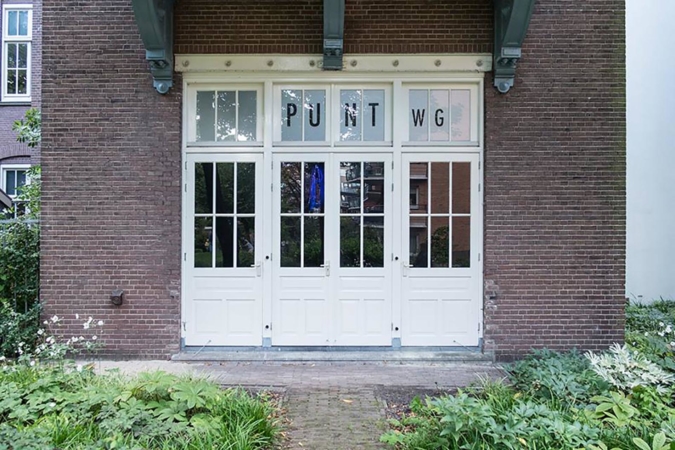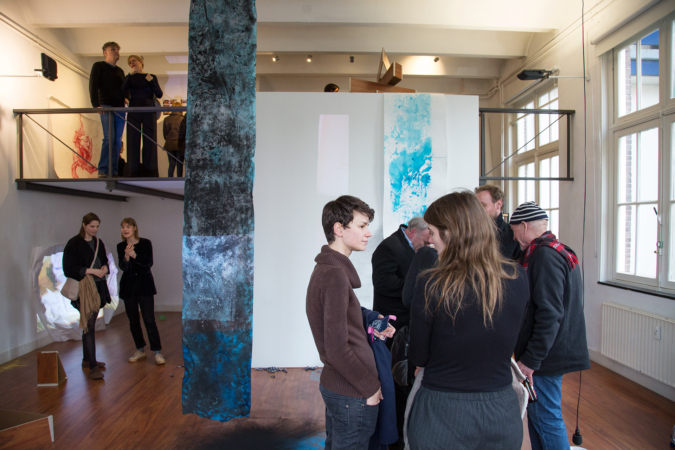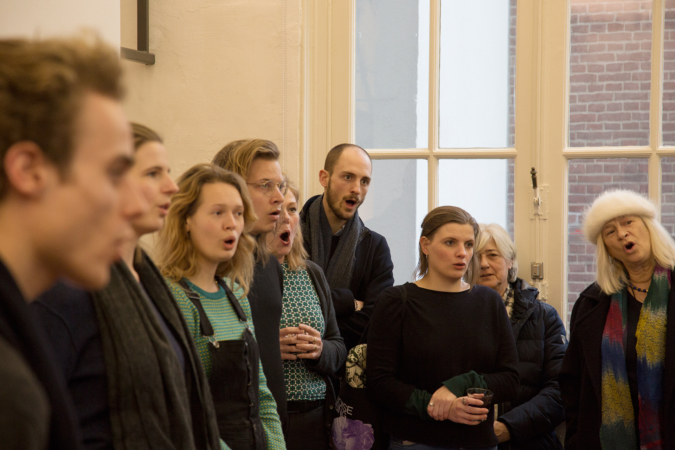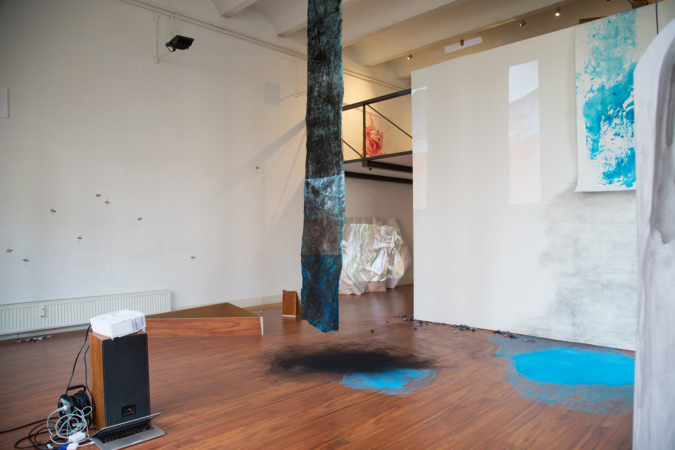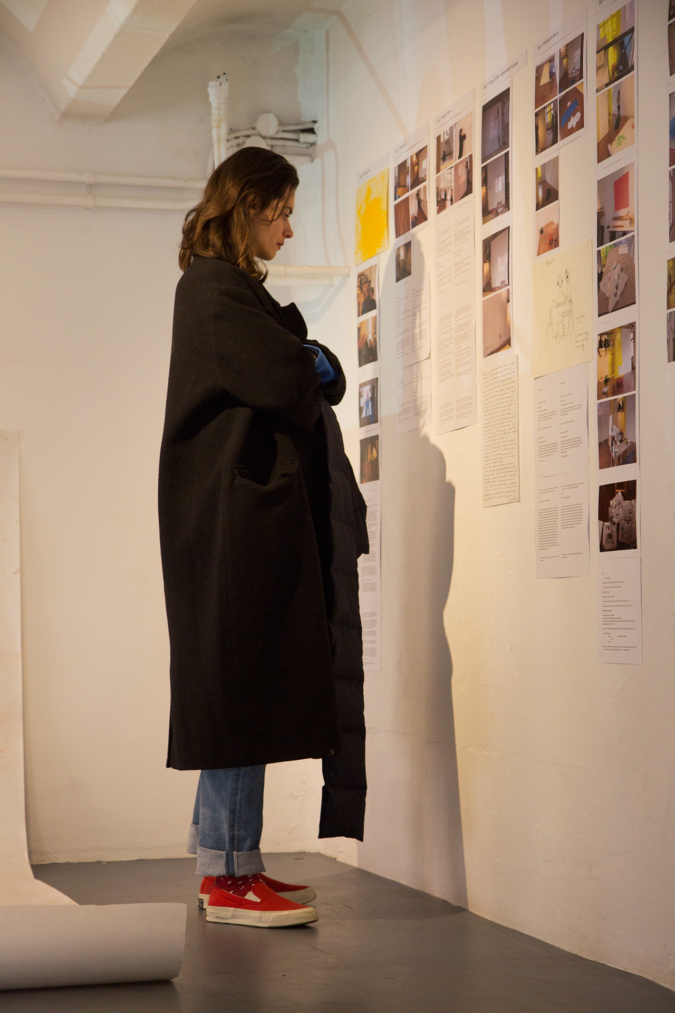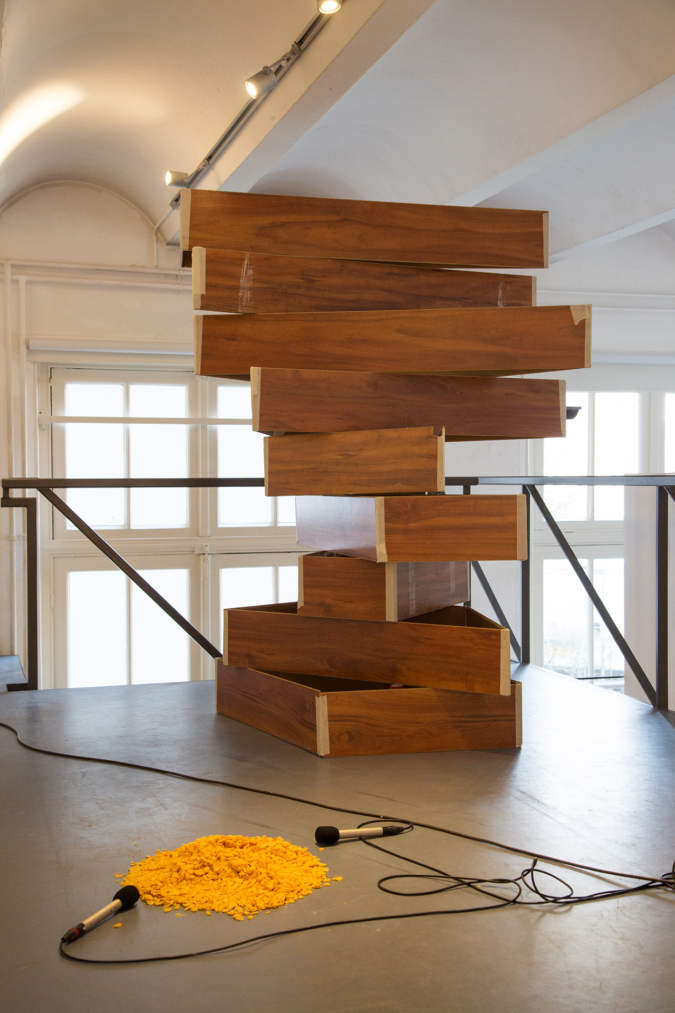Collaborate, Contaminate, Care
Tucked away in a quiet area in the center of Amsterdam are the 120-odd studios of Atelier WG, named after the former hospital Wilhelmina Gasthuis, on which premises the studios are located. The studios are spread over two buildings: still known as ‘maternity ward’ and ‘eye clinic’ respectively. Some of the artists working in either building were in fact born in the ‘Vrouwenkliniek’ and others, including myself, would go for an eye check-up to the ‘Oogkliniek.’ The former morgue, in the basement of a building elsewhere on the premises, can now be booked for parties. I attended a birthday party there, and nothing reminded me of its former function, but I speak only for myself.
The studios are owned by a housing association, a not-for-profit project, which means that rents are moderate. Nonetheless, the complex has been under threat every so often. In the early years when the city proper owned the complex, the threat was the demolition hammer, and more recently it is the threat that the complex may one day be sold to commercial real estate investors. From whichever quarter danger may present itself, we as WG artists have thought it wise to point to the added value for the city of Amsterdam of this large group of professional artists and designers working in the city’s center. By the way, the label ‘WG artists’ points to the fact that these artists are all are working within the same studio compound; they do not necessarily hold the same artistic views.
Threatened or not, one does feel privileged to have a WG studio: the reasonable rent, as mentioned; clean air; no traffic noise; colleagues around but no unplanned knocking on doors just to chitchat. Perhaps inspired by the double sense of threat and privilege, a group of WG artists took up the idea to start a presentation space on the premises. The space, puntWG, opened in 2006. It is run by and supported financially by the artists of atelierWG. It is not, however, a platform for WG artists exclusively but one that presents WG artists alongside with artists and curators from outside.
From this perspective, puntWG is a platform for cross-pollination, for contamination if you may. The show To Contaminate Is to Care (3-25 March 2018) by Jesse Ahlers (NL, 1985), Cecilia Bengtsson (SE, 1984) and Judith Jansen (NL, 1985) is a case in point. To Contaminate Is to Care is a group show revolving around the collaboration of the three artists (who have their studios elsewhere in Amsterdam). “What we are exhibiting is the work on the floor, being seen and heard and experienced, but what we are also exhibiting is our actions, movements, and interventions as well as the processes, the before and the after of a work of art.” [all quotations are from a conversation with the artists].
The title is a provocative gesture, ‘contamination’ emphasizes the uncomfortable aspect of collaborating so closely. All synonyms of the term have negative connotations: corrupt, harm, infect, injure, poison, pollute, stain, taint, tarnish (to quote a few from the Thesaurus). Why then collaborate at all? For Ahlers, Bengtsson, and Jansen (ABJ) this is an experiment, motivated by their wish to open up their work and their thinking about how the work is produced by outside influences. They actively look for ways “to touch and be touched”.
The exhibition takes place at the moment in time in which in the Netherlands, too, there is much debate about national identity. More often than not the exchange of viewpoints is divisive rather than inclusive. The ‘Black Pete’ discussion, by way of an example, seems nowhere near a satisfactory conclusion. ABJ’s artistic experiment can be seen as a counterforce to this tendency of mutual exclusion. To them, identity is porous; it is continuously fine-tuned under the influence of outside forces. The ‘care’ aspect of To Contaminate Is to Care, as ABJ point out, should be seen in this political context: it is one’s responsibility to touch and be touched. But again, the uncomfortable element in this endeavor should not be obscured: for that reason the term ‘opening up’ to describe the show’s intention was rejected as “too cheesy,” while ‘contaminating’ has the necessary bite.
ABJ’s theoretical reference point has been philosopher Karan Barad’s concept of ‘intra-action’: “phenomena or objects do not precede their interaction, rather, ‘objects’ emerge through particular intra-actions.” (Wikipedia). Visitors at the exhibition’s opening participated in a performance inspired by this concept. They were about seventy in total and were instructed to think of a random tone; then to produce that tone; then to listen to the tone of their neighbor and tune in to that sound. Apparently, there were many different neighbors, so the dominant tone that would come floating would be the tone of this group. It would be the ‘object’ that emerged through this particular intra-action (to simplify the exciting event in my own words).
I visited the exhibition on its third day. It is not the conventional group show in which ‘who made what’ is clearly demarcated. On the floor was a circle made of intense blue pigment; on the wall behind it was a blue-colored sheet of paper draped over the banister. In the back was a beamer projection of a slowly moving image projected in its turn on a crumpled sheet of paper. Elsewhere in the space sheets of colored paper were hung from the ceiling; notebook sketches were pinned onto the wall; small items lay on the floor such as containers filled with pigment, and stubs of charcoal. I also became aware of a low sound, barely audible. I was intrigued, and curious about the status of what I saw and heard. What sort of interventions might it trigger? What interventions had preceded?
ABJ describe their work process as a continuous chain of “actions, movements, and interventions.” There are moments of randomness or chaos ánd moments in which randomness and chaos are overcome. These latter moments are what they hope for – they coined the term ‘Cut/Interlude’ to mark them. When any one of the three artists senses that something meaningful has emerged they all come full stop. They ‘Cut’ the work to look for what is happening. If they collectively agree that this is indeed exciting, they call that particular episode an ‘Interlude’. They then sit back and enjoy. So far this has happened twice. A Cut/Interlude, ABJ point out, is hard to document not just because of what contributes to the event can be ephemeral (a flash of sunlight, the singing of birds recorded accidentally) but because so much is going on. It is compressed creativity, energy, synergy.
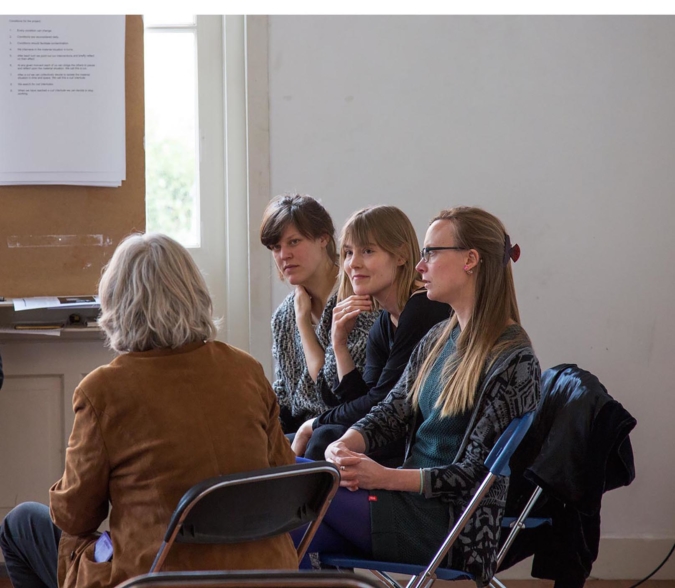
Artist talk with Sher Doruff and the artists Jesse Ahlers, Judith Jansen and Cecilia Bengtsson during the finissage. photo: Kyle Tryhorn
For the viewer, To Contaminate Is to Care is about witnessing their process, “in the imagination […] and in documentation to be seen and read in the space”, more so than about being invited to participate. ABJ: “this project is about relations, interaction, and instability, the only way of making this public is by showing the process itself in an exhibition. It is the work. […] The experiment is all about relations, in their shifting and instability, and about material situations we can impossibly predict, which otherwise would only end up, if we hadn’t chosen to exhibit exactly that, in documentation or retelling, so to say.“
What comes floating from their collaboration is the question whether in the end, contamination is productive and not per se chaos, confusion or loss. ABJ mention another concept of Karan Barad: ‘temporary stable-ness.’ I see this notion reflected in the Cut/Interludes as well as in the outcome of the opening performance. From the clashing of three separate forces, moments of temporary stable-ness have emerged.
For Ahlers, Bengtsson and Jansen chaos and confusion have turned out to be phases in the process. In the end, what they have experienced from their collaboration during To Contaminate Is to Care is that indeed it is productive to contaminate and be contaminated, to touch and be touched.
Dineke Blom, Amsterdam, March 2018
https://puntwg.nl/
https://atelierwg.nl/
https://airwg.nl/
